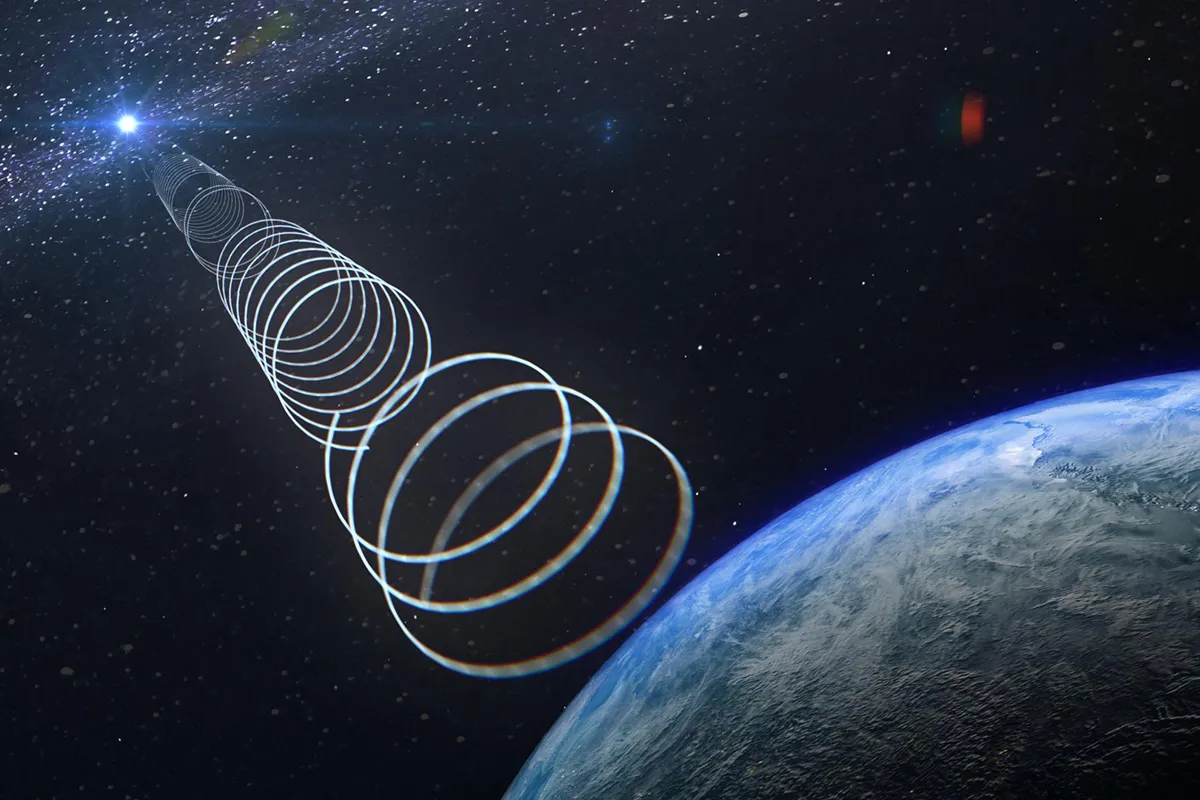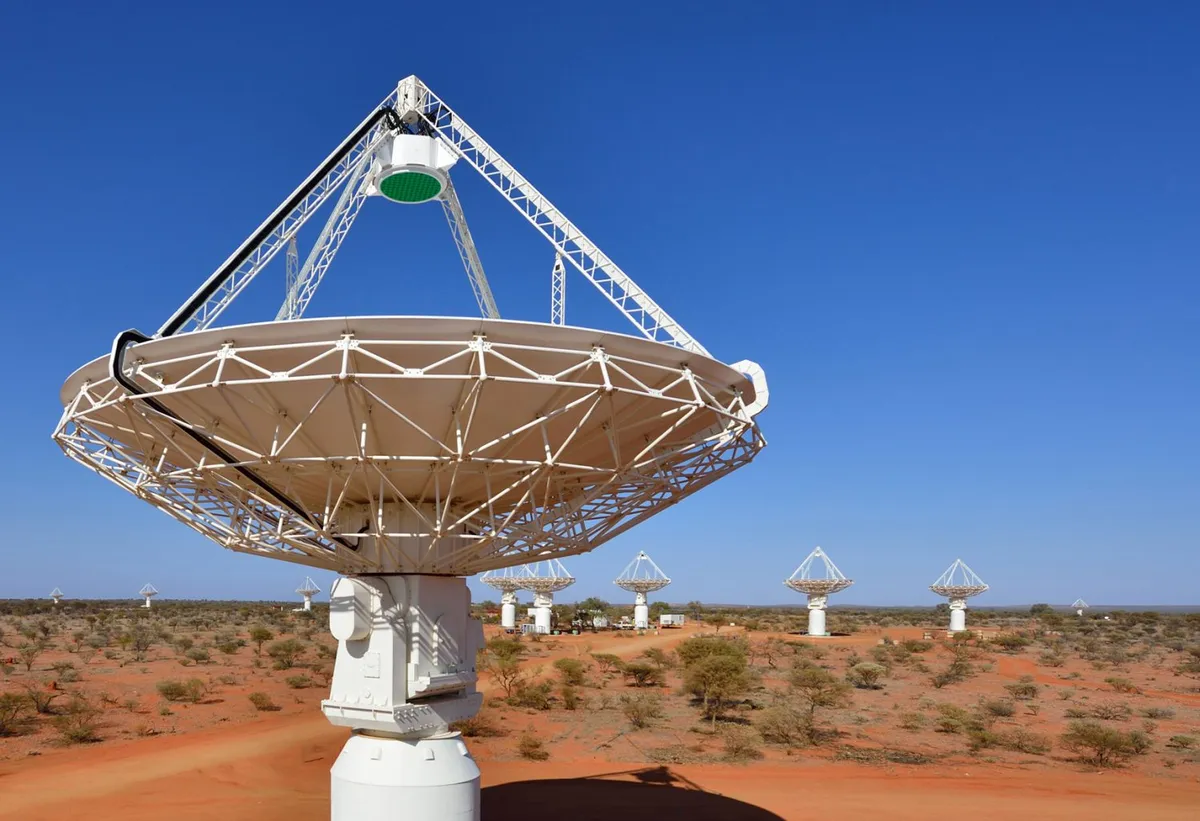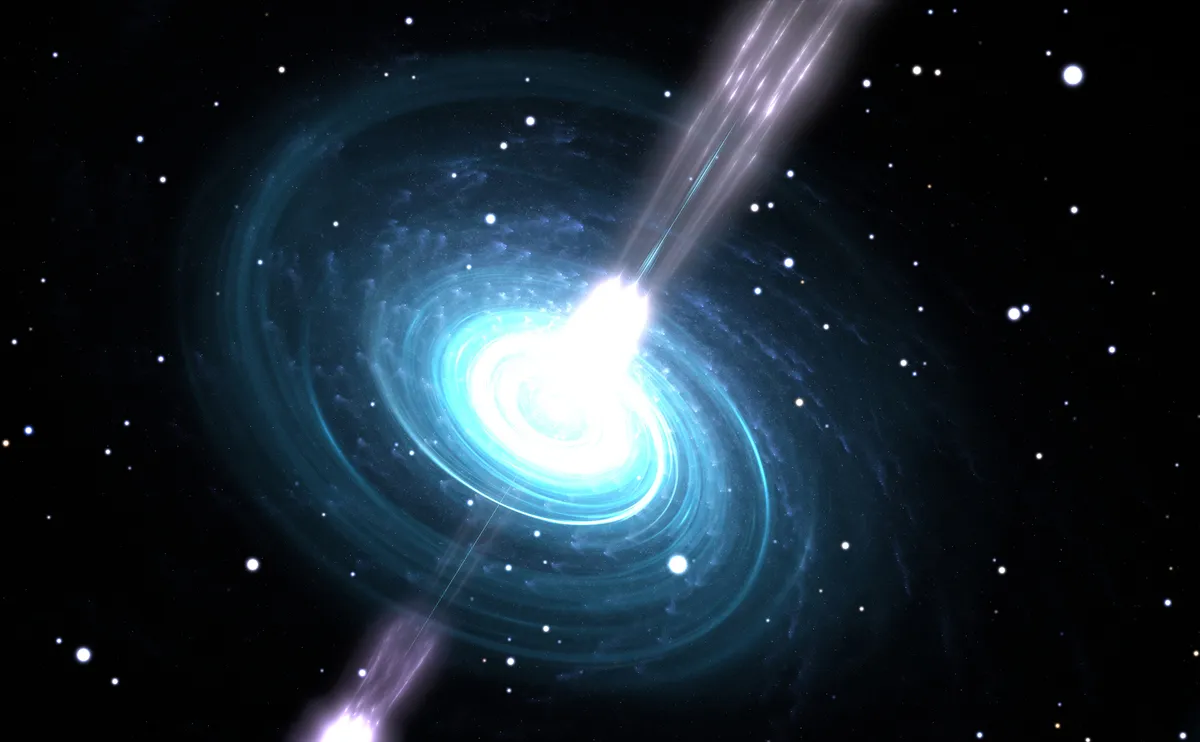It's not unusual for astronomers to detect radio signals in space. In fact, in the field of radio astronomy, telescopes continually pick up signals emanating from pulsars, black holes, massive galaxies, stars and numerous other cosmic phenomena.
But in early 2022, astronomers using the Australian Square Kilometre Array Pathfinder (ASKAP) detected strange radio signals beaming out from the centre of the Milky Way.
Known as radio signal ASKAP J173608.2-321635, it is unlike anything astronomers have detected before.
Ziteng Wang is a PhD Student at the School of Physics at the University of Sydney. We spoke to him to find out more about these unusual detections, how they were discovered and what they could be.

How did you discover the strange radio signal?
We discovered this source in early 2020, by using the Australian Square Kilometre Array Pathfinder (ASKAP) telescope, located in Western Australia.
Our survey – Variables and Slow Transits (VAST) – is designed to discover radio sources that turn on and off or vary in brightness.
We performed a search towards the Galactic centre and this signal was one of the most variable sources in the search.
What makes it so unusual?
The strangest aspect of this source is that it is highly polarised. Our eyes cannot distinguish between circularly polarised light and unpolarised, but ASKAP has the equivalent of polaroid sunglasses to filter it out.
These kinds of sources are rare, usually in one observation, out of thousands of sources we only found 10 that were polarised.
Adding to the mystery, the source of the radio signals turns on and off irregularly.
While the brightness of this source can change dramatically, declining in a single day, the change can sometimes last for a few weeks.

Have we found anything like this before?
No – we came up with several interpretations, but none of them can really fit well.
We considered stars, as both stars and this source are detected in radio waves as signals that switch on and off – and both issue polarised signals.
However, this new source is different to stars because we can’t see anything in infrared wavelengths, and another key difference is that the radio signal is far too bright to be a star.
We also thought this source could be a pulsar (a dead star) or a flaring star, based on what we saw in the VAST data.
Pulsars are rotating compact stars left over from stellar explosions.
Although both pulsars and this source are polarised and have varying brightnesses, we have yet to see any evidence of short-timescale radio pulsation, like you’d expect from a pulsar, in any observations of this source.
Another option is a magnetar, which is a pulsar with an extreme magnetic field.
When these can be detected in radio observations, they can be detected in X-rays as well, but we have seen nothing in our X-ray observations for this new source.

What follow-up observations did you do?
We used the Parkes radio telescope to find short timescale pulsation, to investigate if it was a pulsar.
We also used the MeerKAT telescope to look at the behaviour of the signal.
We searched for the source in X-rays (with the Neil Gehrels Swift and Chandra X-ray Observatories) and infrared (with the Gemini telescope), but we saw nothing.
What could be causing the signal?
This signal shared some similarities with Galactic Centre Radio Transients (GCRTs) – variable radio sources detected near the Galactic centre, the origins of which are still a mystery.
They turn on and off irregularly, are highly polarised, and there is nothing in X-ray or optical wavelengths.
As the source is close to the Galactic centre, it could be a GCRT. However, the timescale of the burst from our source is not consistent with that for GCRTs.
But we don’t even know if all GCRTs share a common origin, so it is hard to say.

What now?
We will do further radio follow-up observations of this source, and perhaps joint observations in other wavelengths.
We would like to observe the source for a longer time when it is radio bright.
As it has not been seen in any other wavelengths, more detailed radio observation will help us locate the object in the visual spectrum.
But we don’t know when the source will turn bright again. It is troublesome.
How is SKA particularly adapted to investigating the signal?
The Square Kilometre Array will be the most powerful radio telescope in the future.
More detections for this signal can allow us to understand the behaviour of the signal, like when it will be on and when it will be off.
It can help us find similar signals and pin down an interpretation.
This interview was originally published in the January 2022 issue of BBC Sky at Night Magazine.

